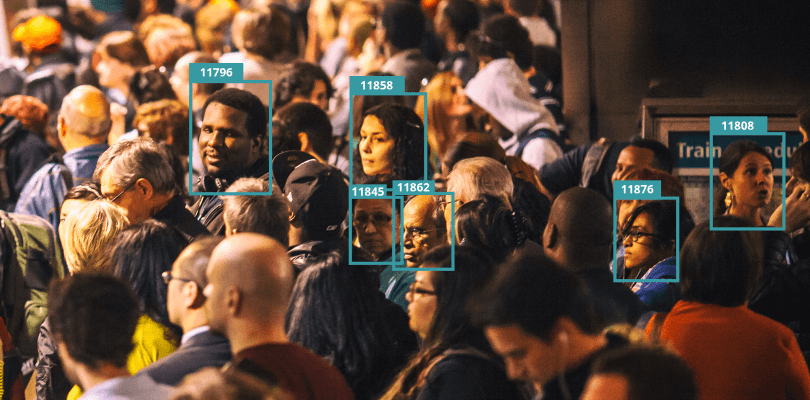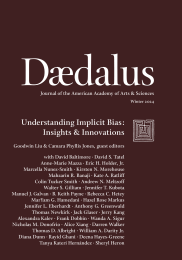
Understanding Implicit Bias: Insights & Innovations
The Science of Implicit Race Bias: Evidence from the Implicit Association Test
Beginning in the mid-1980s, scientific psychology underwent a revolution—the implicit revolution—that led to the development of methods to capture implicit bias: attitudes, stereotypes, and identities that operate without full conscious awareness or conscious control. This essay focuses on a single notable thread of discoveries from the Race Attitude Implicit Association Test (RA-IAT) by providing 1) the historical origins of the research, 2) signature and replicated empirical results for construct validation, 3) further validation from research in sociocognitive development, neuroscience, and computer science, 4) new validation from robust association between regional levels of race bias and socially significant outcomes, and 5) evidence for both short- and long-term attitude change. As such, the essay provides the first comprehensive repository of research on implicit race bias using the RA-IAT. Together, the evidence lays bare the hollowness of current-day actions to rectify disadvantage experienced by Black Americans at individual, institutional, and societal levels.
The Implicit Association Test
Among the general public and behavioral scientists alike, the Implicit Association Test (IAT) is the best known and most widely used tool for demonstrating implicit bias: the unintentional impact of social group information on behavior. More than forty million IATs have been completed at the Project Implicit research website. These public datasets are the most comprehensive documentation of IAT and self-reported bias scores in existence. In this essay, we describe the IAT procedure, summarize key findings using the IAT to document the pervasiveness and correlates of implicit bias, and discuss various ways to interpret IAT scores. We also highlight the most common uses of the IAT. Finally, we discuss unanswered questions and future directions for the IAT specifically, and implicit bias research more generally.
Young Children & Implicit Racial Biases
Children are not born harboring racial biases, but they are born learning. Young children, even infants, learn from the “mere observation” of other people’s behavior. Nonverbal signals of racial biases are abundant in children’s everyday social environments. Studies show that preschool children acquire social group biases when they observe other people’s social interactions and nonverbal behaviors. These new findings have implications for child development and educational equity. Even before kindergarten, racial biases are caught even when not explicitly taught, suggesting the need for practical actions for parents, teachers, and others concerned about the transmission of racial bias across generations.
Uncovering Implicit Racial Bias in the Brain: The Past, Present & Future
Neuroscience is a fantastic tool for peeking inside our minds and unpacking the component processes that drive social group biases. Brain research is vital for studying racial bias because neuroscientists can investigate these questions without asking people how they think and feel, as some individuals may be unaware or reluctant to report it. For the past twenty-five years, neuroscientists have diligently mapped implicit racial bias’s neural foundations. As with any new approach, the emergence of neuroscience in studying implicit racial bias has elicited excitement and skepticism: excitement about connecting social biases to biological machinery, and skepticism that neuroscience may provide little to our understanding of social injustice. In this essay, I dive into what we have learned about implicit racial bias from the brain and the limitations of our current approach. I conclude by discussing what is on the horizon for neuroscience research on racial bias and social injustice.
Implicit Bias as a Cognitive Manifestation of Systemic Racism
Explicitly prejudiced attitudes against Black Americans have declined gradually since the 1960s. Yet racial disparities and racial discrimination remain significant problems in the United States. How could discrimination and disparate outcomes remain constant even while racial prejudice decreased? Two prominent explanations have emerged to explain these puzzling trends. Sociologists have proposed that disparities and discrimination are perpetuated by systemic racism, or the policies, practices, and societal structures that disadvantage some racial groups compared with others. Simultaneously, psychologists have proposed that implicit biases may sustain discrimination even in the absence of explicit prejudice. In this essay, we explore newly discovered connections between systemic racism and implicit bias, how they challenge traditional views to reorient our understanding of implicit bias, and how they shed new light on strategies to reduce bias.
“When the Cruiser Lights Come On”: Using the Science of Bias & Culture to Combat Racial Disparities in Policing
In this essay, we highlight the interplay between individuals’ psychological processes and sociocultural systems in producing and maintaining racial bias. We use a conceptual tool we call the culture cycle to map these dynamics, and illustrate them with research and in-depth examples from our work reducing racial disparities in routine policing in Oakland, California. We feature the most common police encounter—the vehicle stop—and highlight evidence-based interventions we developed both to reduce the frequency of vehicle stops and mitigate racial disparities in stops. Throughout, we draw on our expertise in the social psychology of bias, culture, and inequality, as well as our experiences building research-driven partnerships with public- and private-sector leaders, to inform organizational and societal change.
Disrupting the Effects of Implicit Bias: The Case of Discretion & Policing
Police departments tend to address operational challenges with training approaches, and implicit bias in policing is no exception. However, psychological scientists have found that implicit biases are very difficult to reduce in any lasting, meaningful way. Because they are difficult to change, and nearly impossible for the decision-maker to recognize, training to raise awareness or teach corrective strategies is unlikely to succeed. Recent empirical assessments of implicit bias trainings have shown, at best, no effect on racial disparities in officers’ actions in the field. In the absence of effective training, a promising near-term approach for reducing racial disparities in policing is to reduce the frequency of actions most vulnerable to the influence of bias. Specifically, actions that allow relatively high discretion are most likely to be subject to bias-driven errors. Several cases across different policing domains reveal that when discretion is constrained in stop-and-search decisions, the impact of racial bias on searches markedly declines.
Roles for Implicit Bias Science in Antidiscrimination Law
Declining scholarly interest in intentional discrimination may be due to rapid growth of interest in systemic biases and implicit biases. Systemic biases are produced by organizational personnel doing their assigned jobs, but nevertheless causing adverse impacts to members of protected classes as identified in civil rights laws. Implicit biases are culturally formed stereotypes and attitudes that cause selective harms to protected classes while operating mostly outside of conscious awareness. Both are far more pervasive and responsible for much greater adversity than caused by overt, explicit bias, such as hate speech. Scientific developments may eventually influence jurisprudence to reduce effects of systemic and implicit biases, but likely not rapidly. We conclude by describing possibilities for executive leadership in both public and private sectors to ameliorate discrimination faster and more effectively than is presently likely via courts and legislation.
Little Things Matter a Lot: The Significance of Implicit Bias, Practically & Legally
Skeptics point out that measures of implicit bias can only weakly predict discrimination. And it is true that under current technologies, the degree of correlation between implicit bias (for example, as measured by the Implicit Association Test) and discriminatory judgment and behavior is small to moderate. In this essay, I argue that these little effects nevertheless matter a lot, in two different senses. First, in terms of practical significance, small burdens can accumulate over time to produce a large impact in a person’s life. When these impacts are integrated not only over time but double integrated over large populations, these little things become even more practically significant. Second, in terms of legal significance, an upgraded model of discrimination that incorporates implicit bias has started to reshape antidiscrimination law. This transformation reflects a commitment to “behavioral realism”: a belief that the law should reflect more accurate models of human thinking and behavior.
Retooling Career Systems to Fight Workplace Bias: Evidence from U.S. Corporations
The civil rights movement spurred U.S. companies and universities to implement antidiscrimination programs. Beginning in the early 1960s, employers adopted antibias training as their first line of defense against bigotry. Even then, there was substantial evidence that this approach was unlikely to lessen bias. In this essay, we discuss social science research on the effects of antibias training, as well as research on systemic approaches to reducing institutional discrimination based on insights from contact theory. As sociologist Samuel Stouffer and psychologist Gordon Allport, the progenitors of contact theory, might have predicted by the end of World War II, we find that interventions to change career systems to maximize intergroup contact can promote workplace equity.
Implicit Bias versus Intentional Belief: When Morally Elevated Leadership Drives Transformational Change
The twenty-first century is witnessing rapid and deep change in the global economy. These changes require innovation-driven solutions and motivated, skilled workforces. The talents of every person will be required to support performance in every domain, and deliberate actions must be taken to address impediments to full engagement. Even with clear government policy and significant investments in encouraging representation and inclusion of diversity of race, sexual orientation, gender identity, and ability, progress continues to lag. This essay captures promising practices and recommendations for structural or systemic change punctuated with stories of leadership driven by the belief that implementing strategies to disrupt the effects of implicit bias are important to develop diverse, fully engaged populations.
Mirror, Mirror, on the Wall, Who’s the Fairest of Them All?
Debates in AI ethics often hinge on comparisons between AI and humans: which is more beneficial, which is more harmful, which is more biased, the human or the machine? These questions, however, are a red herring. They ignore what is most interesting and important about AI ethics: AI is a mirror. If a person standing in front of a mirror asked you, “Who is more beautiful, me or the person in the mirror?” the question would seem ridiculous. Sure, depending on the angle, lighting, and personal preferences of the beholder, the person or their reflection might appear more beautiful, but the question is moot. AI reflects patterns in our society, just and unjust, and the worldviews of its human creators, fair or biased. The question then is not which is fairer, the human or the machine, but what can we learn from this reflection of our society and how can we make AI fairer? This essay discusses the challenges to developing fairer AI, and how they stem from this reflective property.
Deprogramming Implicit Bias: The Case for Public Interest Technology
New technologies have fundamentally transformed the systems that govern modern life, from criminal justice to health care, housing, and beyond. Algorithmic advancements promise greater efficiency and purported objectivity, but they risk perpetuating dangerous biases. In response, the field of public interest technology has emerged to offer an interdisciplinary, human-centered, and equity-focused approach to technological innovation. This essay argues for the widespread adoption of public interest technology principles, including thinking critically about how and when technological solutions are deployed, adopting rigorous training to educate technologists on ethical and social context, and prioritizing the knowledge and experiences of communities facing the disproportionate harms or uneven benefits of technology. Tools being designed and deployed today will shape our collective future, and collaboration between philanthropy, government, storytellers, activists, and private-sector technologists is essential in ensuring that these new systems are as just as they are innovative.
